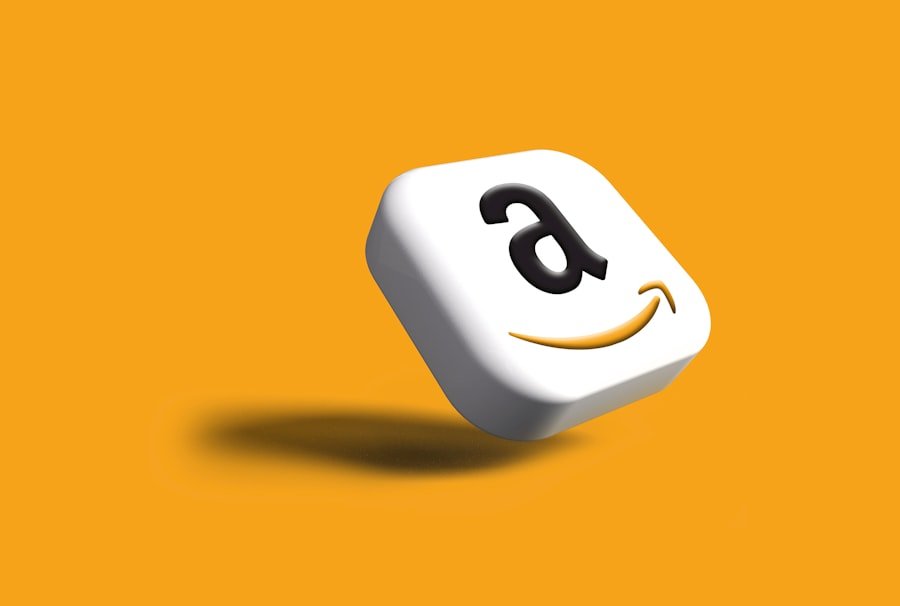How to Start a Profitable Amazon Dropshipping Business in 2024

Dropshipping is a popular business model that allows entrepreneurs to sell products to customers without holding any inventory. Instead, the seller purchases the item from a third party, usually a wholesaler or manufacturer, and has it shipped directly to the customer. This means that the seller doesn’t have to deal with the hassle of storing, packaging, and shipping products themselves. Amazon is a popular platform for dropshipping due to its large customer base and efficient fulfillment network.
When it comes to dropshipping on Amazon, it’s important to understand the platform’s policies and guidelines. Amazon has strict rules regarding dropshipping, and sellers must adhere to these regulations to avoid suspension or termination of their accounts. Additionally, sellers need to consider factors such as competition, profit margins, and customer demand when selecting products to dropship on Amazon. It’s essential to conduct thorough research and analysis before diving into the world of Amazon dropshipping to ensure a successful and sustainable business.
Key Takeaways
- Dropshipping on Amazon involves selling products without holding inventory
- Research profitable niche products with high demand and low competition
- Set up Amazon seller account and list products with high-quality images and descriptions
- Find reliable suppliers with good track records for timely shipping and quality products
- Implement effective marketing strategies such as SEO, PPC, and social media to drive sales
Researching Profitable Niche Products to Sell
One of the key aspects of a successful Amazon dropshipping business is finding profitable niche products to sell. Niche products are specific items that cater to a particular market segment, and they often have less competition compared to mainstream products. When researching niche products, sellers should consider factors such as demand, competition, and profit margins. Tools like Amazon’s Best Sellers list, Google Trends, and keyword research can help sellers identify trending products and niche markets.
In addition to analyzing market trends, sellers should also consider their own interests and expertise when selecting niche products. Selling products that align with their passions and knowledge can make the business more enjoyable and sustainable in the long run. It’s also important to consider the seasonality of products and their potential for long-term success. By conducting thorough research and analysis, sellers can identify profitable niche products that have the potential to drive sales and generate sustainable revenue on Amazon.
Setting Up Your Amazon Seller Account and Listing Products
Once sellers have identified profitable niche products, the next step is to set up an Amazon seller account and list their products. There are two types of seller accounts on Amazon: Individual and Professional. Individual accounts are suitable for sellers who plan to sell fewer than 40 items per month, while Professional accounts are ideal for those who anticipate selling more than 40 items per month. Sellers can sign up for a seller account on Amazon’s website and follow the step-by-step instructions to complete the registration process.
After setting up their seller account, sellers can start listing their products on Amazon’s marketplace. When creating product listings, it’s important to optimize product titles, descriptions, and images to attract potential customers. Sellers should also carefully select relevant keywords and categories to ensure their products appear in relevant search results. Additionally, sellers need to set competitive prices and offer attractive shipping options to entice customers. By effectively setting up their Amazon seller account and listing products, sellers can maximize their visibility and attract potential buyers to their niche products.
Finding Reliable Suppliers for Your Dropshipping Business
Finding reliable suppliers is crucial for the success of an Amazon dropshipping business. Suppliers are responsible for fulfilling orders and shipping products directly to customers, so it’s essential to partner with trustworthy and reputable suppliers. Sellers can find suppliers through online directories, trade shows, and industry associations. It’s important to vet potential suppliers by conducting thorough research, reading reviews, and requesting samples of their products.
When evaluating suppliers, sellers should consider factors such as product quality, shipping times, communication, and return policies. It’s also important to establish clear terms and agreements with suppliers to ensure a smooth and efficient dropshipping process. Building strong relationships with suppliers can lead to better pricing, priority access to new products, and improved customer service. By finding reliable suppliers for their dropshipping business, sellers can ensure a seamless fulfillment process and deliver high-quality products to their customers.
Implementing Effective Marketing Strategies to Drive Sales
Marketing plays a crucial role in driving sales and attracting customers to an Amazon dropshipping business. Sellers can implement various marketing strategies to promote their niche products and increase visibility on the platform. One effective strategy is search engine optimization (SEO), which involves optimizing product listings with relevant keywords to improve their ranking in Amazon’s search results. Sellers can also leverage social media platforms, email marketing, and influencer partnerships to reach a wider audience and drive traffic to their Amazon listings.
In addition to digital marketing efforts, sellers can also consider running promotions, discounts, and advertising campaigns on Amazon to attract customers. Amazon offers various advertising options such as Sponsored Products, Sponsored Brands, and Sponsored Display ads that can help sellers increase product visibility and drive sales. It’s important for sellers to track the performance of their marketing efforts and adjust their strategies based on data and analytics. By implementing effective marketing strategies, sellers can increase brand awareness, attract potential customers, and drive sales for their niche products on Amazon.
Managing Customer Service and Fulfillment Processes

Managing customer service and fulfillment processes is essential for maintaining a positive reputation and ensuring customer satisfaction in an Amazon dropshipping business. Sellers need to provide excellent customer service by promptly responding to inquiries, addressing concerns, and handling returns or exchanges efficiently. It’s important to set clear expectations with customers regarding shipping times, product quality, and return policies to avoid misunderstandings or negative feedback.
In terms of fulfillment processes, sellers should closely monitor inventory levels and communicate effectively with suppliers to prevent stockouts or shipping delays. It’s crucial to maintain accurate product listings, update inventory levels regularly, and ensure that orders are fulfilled in a timely manner. Sellers can also consider using fulfillment services or software solutions to streamline the order fulfillment process and improve efficiency. By effectively managing customer service and fulfillment processes, sellers can build trust with customers and maintain a positive reputation for their Amazon dropshipping business.
Scaling Your Amazon Dropshipping Business for Long-Term Success
As an Amazon dropshipping business grows, sellers may consider scaling their operations for long-term success. Scaling a dropshipping business involves expanding product offerings, optimizing processes, and exploring new market opportunities. Sellers can diversify their product range by adding complementary items or expanding into related niche markets to attract a broader customer base. It’s important to continuously research market trends, analyze customer feedback, and adapt the product selection to meet evolving demands.
In addition to expanding product offerings, sellers can also optimize their processes by leveraging automation tools, outsourcing tasks, or investing in technology solutions. Automation can help streamline order processing, inventory management, and customer communication, allowing sellers to focus on strategic growth initiatives. Furthermore, sellers can explore international marketplaces or consider selling on other e-commerce platforms to reach new audiences and expand their business globally. By scaling their Amazon dropshipping business strategically, sellers can achieve long-term success and capitalize on new opportunities in the e-commerce landscape.
In conclusion, dropshipping on Amazon offers entrepreneurs an opportunity to build a successful e-commerce business without the need for holding inventory or managing fulfillment processes. By understanding the basics of dropshipping on Amazon, researching profitable niche products, setting up a seller account, finding reliable suppliers, implementing effective marketing strategies, managing customer service and fulfillment processes, and scaling the business for long-term success, entrepreneurs can create a sustainable and profitable venture on one of the world’s largest e-commerce platforms. With careful planning, strategic decision-making, and continuous adaptation to market trends, entrepreneurs can thrive in the competitive landscape of Amazon dropshipping and achieve their business goals.
Looking to expand your knowledge on starting a profitable Amazon dropshipping business in 2024? Check out this insightful article on howtostart.digital that provides valuable tips and strategies for success. Whether you’re a beginner or experienced entrepreneur, this article offers practical advice and actionable steps to help you thrive in the competitive world of e-commerce. Learn from industry experts and stay ahead of the game with the latest trends and best practices.
FAQs
What is Amazon dropshipping?
Amazon dropshipping is a retail fulfillment method where a store doesn’t keep the products it sells in stock. Instead, when a store sells a product, it purchases the item from a third party and has it shipped directly to the customer.
How do I start a profitable Amazon dropshipping business in 2024?
To start a profitable Amazon dropshipping business in 2024, you will need to research profitable products, find reliable suppliers, set up an Amazon seller account, optimize your product listings, and implement effective marketing strategies.
What are the benefits of starting an Amazon dropshipping business?
Some benefits of starting an Amazon dropshipping business include low startup costs, the ability to sell a wide range of products without holding inventory, and the potential for high-profit margins.
What are the challenges of starting an Amazon dropshipping business?
Challenges of starting an Amazon dropshipping business may include finding reliable suppliers, dealing with potential shipping delays, and managing customer service issues related to product quality and delivery.
Is Amazon dropshipping legal?
Yes, Amazon dropshipping is legal as long as you comply with Amazon’s dropshipping policy and adhere to all relevant laws and regulations regarding product sourcing, sales tax, and customer data protection.
What are some tips for success in Amazon dropshipping?
Some tips for success in Amazon dropshipping include conducting thorough market research, building a strong relationship with reliable suppliers, providing excellent customer service, and continuously optimizing your product offerings and marketing strategies.




